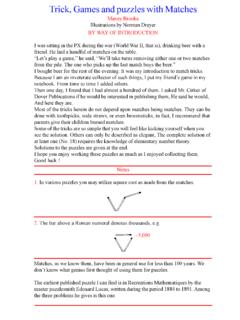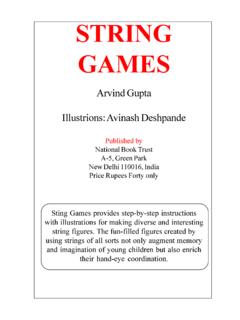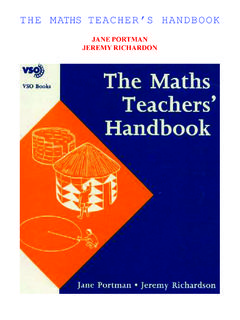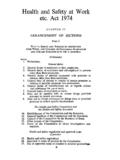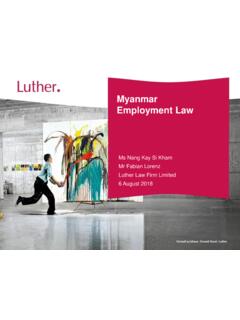Transcription of SOCIAL MOVEMENTS IN INDIA - ArvindGuptaToys
1 SOCIAL MOVEMENTS IN INDIA . A Review of Literature Ghanshyam Shah Praise for the First Edition Prof. Shah deserves to be richly congratulated for his painstaking intellectual effort in giving us this invaluable reference tool. Deecan Herald .. represents a feat of excellence in the realm of research. Indian Historical Review .. an excellent contribution to an important area which demands greater attention by scholars and researchers. SOCIAL Action ..an important contribution to the understanding of SOCIAL MOVEMENTS in INDIA . Choice: Journal of the American Library Association SOCIAL MOVEMENTS primarily take the form of non-institutionalised collective political action which strive for political and /or SOCIAL change. While INDIA has witnessed many such MOVEMENTS over the centuries, it is only recently that scholars have begun to study them in depth.
2 This thoroughly revised and updated version of a seminal book divides studies on SOCIAL MOVEMENTS in INDIA into nine categories based on the participants and issues involved: peasants, tribals, dalits, backward castes, women, students, middle class, working class, and human rights and environmental groups. Each of the nine chapters is divided according to the major components of most SOCIAL MOVEMENTS : issues, ideology, organisation and leadership. Based on these divisions, Professor Shah critically examines and reviews the literature concerning SOCIAL MOVEMENTS in INDIA from 1857 to the present. In the process he discusses the theoretical issues raised by various scholars while analysing major trends in different MOVEMENTS . In conclusion, he suggests areas for future research.
3 Proposing a logical classification of SOCIAL MOVEMENTS in modern INDIA , this book will be widely welcomed by SOCIAL activists as well as by political scientists, historians and sociologists. It will also be invaluable as a text m courses on SOCIAL MOVEMENTS . CONTENTS. Abbreviations Preface to the First Edition Introduction 2. Peasant MOVEMENTS 3. Tribal MOVEMENTS 4. Dalit MOVEMENTS 5. Backward Caste/Class MOVEMENTS 6. Women's MOVEMENTS 7. Industrial Working Class MOVEMENTS 8. Students' MOVEMENTS 9. Middle Class MOVEMENTS 10. Human Rights and Environmental MOVEMENTS 11. Conclusions and Future Research ABBREVIATIONS. ADMK Anna Dravida Munnetra Kazhagam AEP Adivasi Ekta Parishad AFDR All INDIA trade union Congress AFDR Association for Democratic Rights AITUC All INDIA trade union Congress AIWC All INDIA Women's Conference APCLC Andhra Pradesh Civil Liberties Committee BJP Bharatiya Janata Party BKU Bharatiya Kisan union CITU Centre of Indian trade Unions CMSS Chhattisgarh Mines Shramik Sangh CPDR Committee for the Protection of Democratic Rights CPI(M) Communist Party of INDIA (Marxist).
4 CSE Centre for Science and Environment CSV Chhatra Sangharsh Vahini DMK Dravida Munnetra Kazhagam HMS Hind Mazdur Sabha ICLU Indian Civil Liberties union ICSSR Indian Council of SOCIAL Science Research ILP Independent Labour Party INC Indian National Congress INTUC Indian National trade union Congress KPSM Kerala People's Science Movement KSSP Kerala Shastra Sahitya Parishad MISA Maintenance of Internal Security Act MKSS Mazdoor Kisan Shakti Sangathan NBA Narmada Bachao Andolan NGO Non-government Organisation NHRC National Human Rights Commission OBC Other Backward Castes POTA Prevention of Terrorism Act POW Progressive Organisation of Women (in Hyderabad). PUCL People's union for Civil Liberties PUDR People's union for Democratic Rights PWG People's War Group RCDA Rural Community Development Association {Tamil Nadu).}
5 SC Scheduled Caste SCF Scheduled Castes Federation SEWA Self-employed Women's Association SNDP Yogam Association for the Maintenance of Dharma founded by Shri Narayana ST Scheduled Tribe TADA Terrorist and Anti-Disruptive Activities Prevention Act TISCO Tata Iron and Steel Company UGC University Grants Commission UNO United Nations Organisation UP Uttar Pradesh PREFACE TO THE SECOND AND ENLARGED EDITION. I am happy that the book received a wide response from teachers, students and researchers from different disciplines. More than two years back Mr Tejeshwar Singh suggested a new edition which I agreed to revise and update. While working on the revision I frequently felt like rewriting the whole book as my own theoretical framework on SOCIAL MOVEMENTS and SOCIAL transformation has undergone a change since 1990, but then it would have resulted in a new book which in the given time and with my other commitments was not possible.
6 However, I have completely rewritten the chapter on women's MOVEMENTS and added a new chapter on human rights and environmental MOVEMENTS . I hope the readers will find them useful. The Fellowship at NIAS (Netherlands Institute for Advanced Study in the Humanities and SOCIAL Sciences), Wassenaar, the Netherlands provided conducive environment and facilities which enabled me to complete the revision. I thank the institute and its librarian Harriet de Man for support. I also thank Jaya Dalai for meticulous and thoughtful copy editing. But for the gentle perseverance and frequent reminders of Tejeshwar Singh I would have not completed this work. I thank Uma Chakravarti, Mary John, Nayar, Virginius Xaxa, Sharit K. Bhowmik and Shitharamam Kakarala for their help with different chapters of the book.
7 Kalpana as usual not only patiently suffered my moods but also shared my thoughts as I read various studies and revised this text. PREFACE TO THE FIRST EDITION. This monograph aims to review the literature on SOCIAL MOVEMENTS in INDIA . The Advisory Committee of the Indian Council of SOCIAL Science Research (ICSSR) for the second round of the Research Survey-in Political Science assigned the task to me. The purpose of this exercise is to gauge broad trends coverage of the subject in terms of SOCIAL groups, geographical areas and periods, theoretical debates, approaches, major findings, etc. and to point out the gaps so that the ICSSR can decide the priorities in funding research. Such a review may also be useful to scholars for planning their studies and avoiding duplication.
8 SOCIAL MOVEMENTS ' are not the concern of political science only. In fact, for a variety of reasons, political science has by and large ignored this subject. One who is interested in understanding the nature of the state, political power, and conflict in society cannot but help studying SOCIAL structure, SOCIAL processes, culture, economic structure, and the inter- relationships between them all. Some of the SOCIAL MOVEMENTS in post-independence INDIA have their antecedents in the colonial period, and they cannot be delinked from MOVEMENTS that took place in the last century or early in the twentieth century. Historical studies enrich our understanding of the present. Hence, a study on SOCIAL MOVEMENTS '. cannot be confined by the boundaries of separate academic disciplines.
9 It should have not so much more of an inter-disciplinary' approach as understood by academia, as it should be non-disciplinary' to avoid the burden of one or another discipline. Though I have not been able to overcome my concern with political science in reviewing the literature, I. have not confined myself to studies by political scientists only. When I began this study, I was faced with two questions. Should I confine the study to merely the contemporary MOVEMENTS of the post-independence period? Should I cover only mass' MOVEMENTS , irrespective of SOCIAL strata or classes involved therein? First, in order to come to a meaningful understanding of the present, one has to understand the past, but because of the constraints of time and resources, one has to draw a cut-off line.
10 I. have decided to cover the studies dealing with SOCIAL MOVEMENTS ' since the establishment of the British Raj. Again, because of the above-mentioned constraints, I. have not adequately dealt with socio-religious and freedom MOVEMENTS . My excuse would he that socio-religious MOVEMENTS only marginally affect state power at a given point of time. In the case of the freedom movement, the studies are many and it is difficult for one scholar to cover them all. Also, many of the studies on the freedom movement have dealt with the decision-making and the action of the elite rather than of the masses. Second, I believe that most of the SOCIAL MOVEMENTS are largely, though not always, confined to one or another class or SOCIAL stratum. Many of the studies are class/strata-specific like those on peasant, women's and dalit MOVEMENTS .




